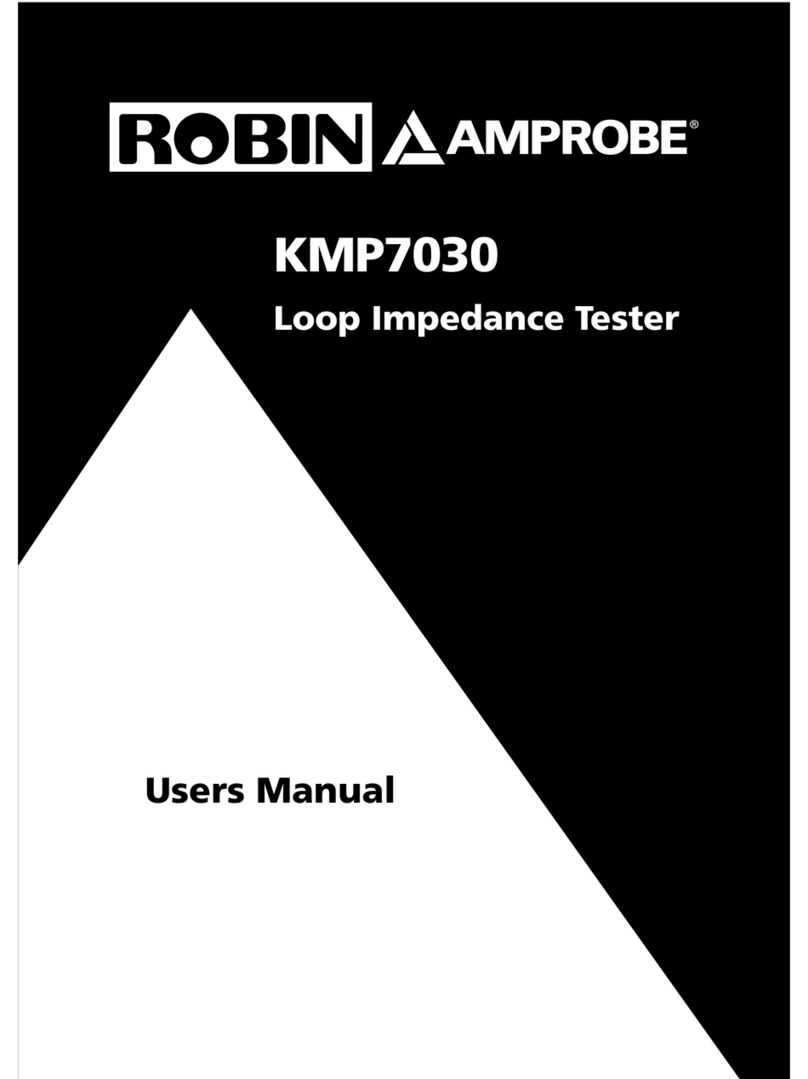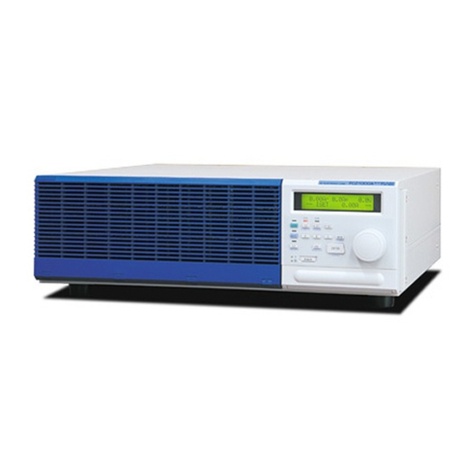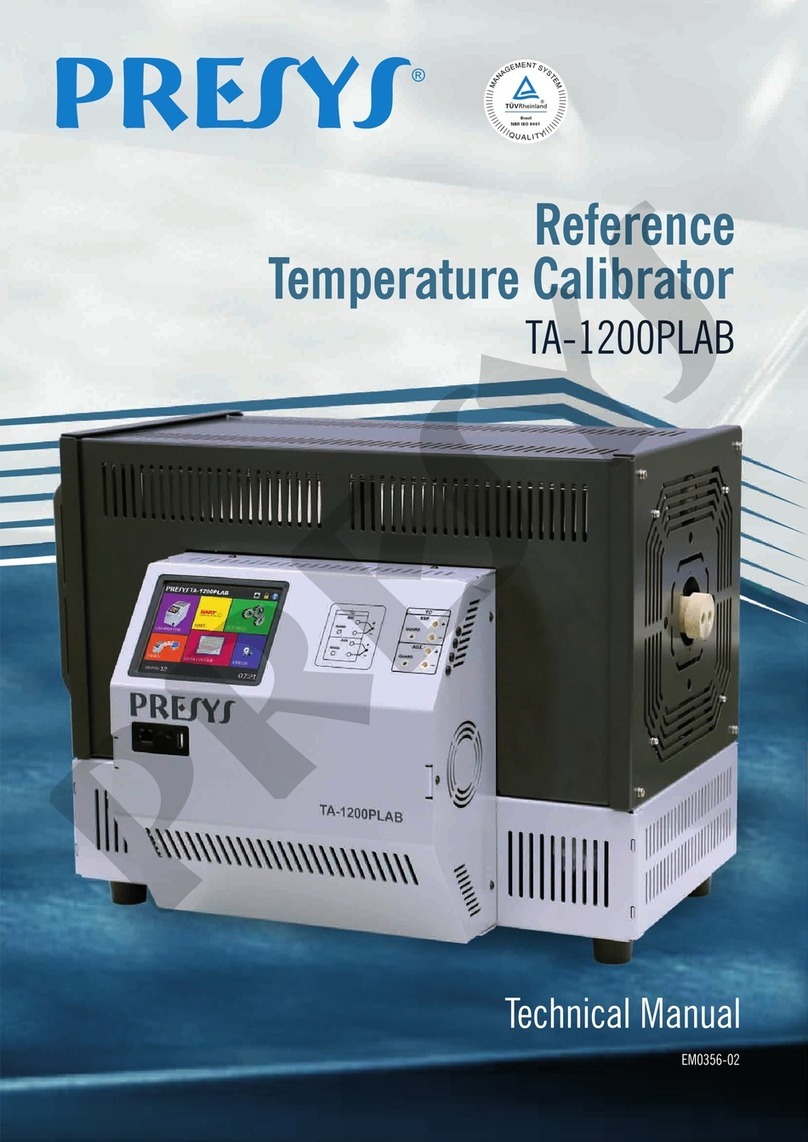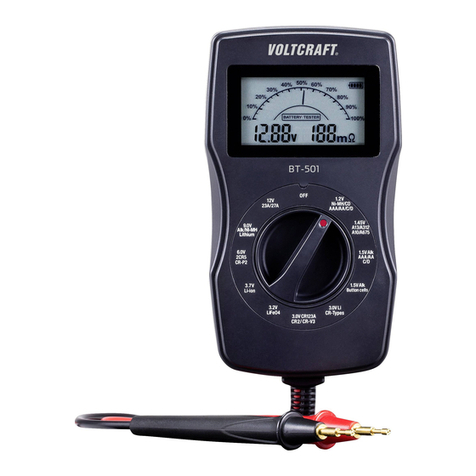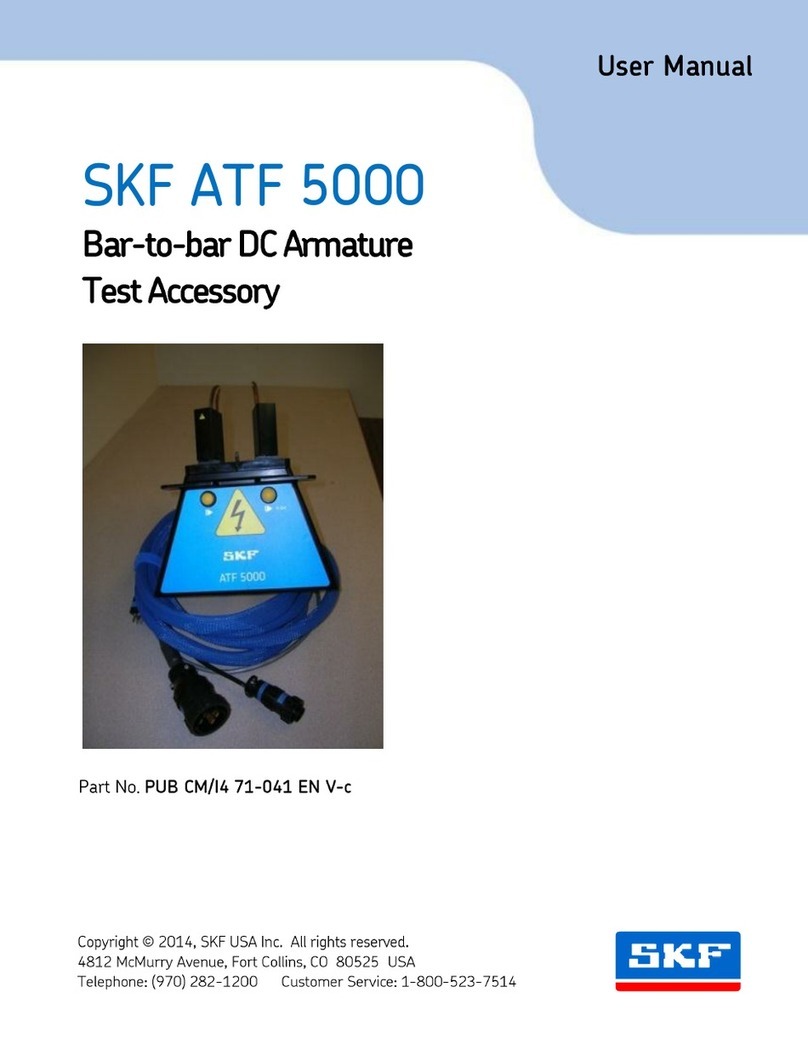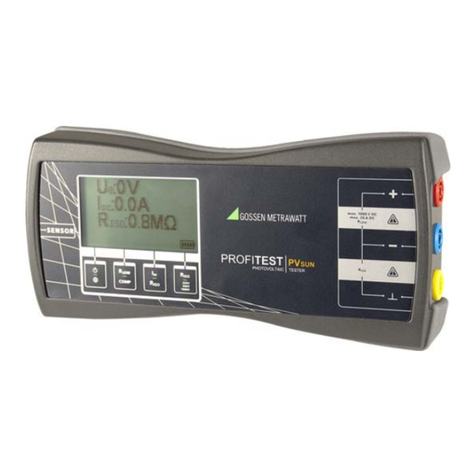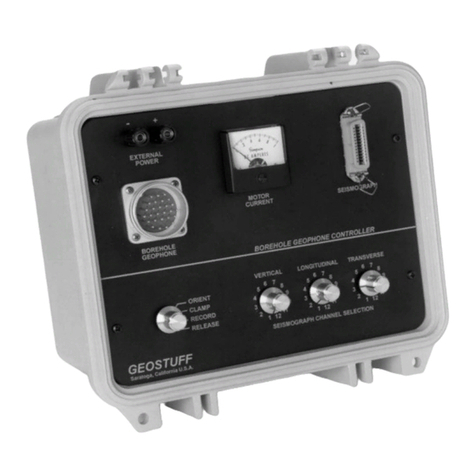Robin-Amprobe KTS1625 User manual

Users Manual
KTS1625
Digital Multifunction Tester


KTS1625
Digital Multifunction Tester
Users Manual
September 2011, Rev.1
©2011 Amprobe Test Tools.
All rights reserved. Printed in China
English

Limited Warranty and Limitation of Liability
Your Amprobe product will be free from defects in material and workmanship for 1 year from
the date of purchase, unless local laws require otherwise. This warranty does not cover fuses,
disposable batteries or damage from accident, neglect, misuse, alteration, contamination, or
abnormal conditions of operation or handling. Resellers are not authorized to extend any other
warranty on Amprobe’s behalf. To obtain service during the warranty period, return the product
with proof of purchase to an authorized Amprobe Test Tools Service Center or to an Amprobe
dealer or distributor. See Repair Section for details. THIS WARRANTY IS YOUR ONLY REMEDY.
ALL OTHER WARRANTIES - WHETHER EXPRESS, IMPLIED OR STAUTORY - INCLUDING IMPLIED
WARRANTIES OF FITNESS FOR A PARTICULAR PURPOSE OR MERCHANTABILITY, ARE HEREBY
DISCLAIMED. MANUFACTURER SHALL NOT BE LIABLE FOR ANY SPECIAL, INDIRECT, INCIDENTAL
OR CONSEQUENTIAL DAMAGES OR LOSSES, ARISING FROM ANY CAUSE OR THEORY. Since
some states or countries do not allow the exclusion or limitation of an implied warranty or of
incidental or consequential damages, this limitation of liability may not apply to you.
Repair
All test tools returned for warranty or non-warranty repair or for calibration should be
accompanied by the following: your name, company’s name, address, telephone number, and
proof of purchase. Additionally, please include a brief description of the problem or the service
requested and include the test leads with the meter. Non-warranty repair or replacement charges
should be remitted in the form of a check, a money order, credit card with expiration date, or a
purchase order made payable to Amprobe® Test Tools.

PFC PSC
KTS1625 Digital Multifunction Tester
1LCD Display
2Function Buttons (F1, F2, F3, F4)
F1: Display Backlight
Continuity Buzzer
0° or 180° phase selection for RCD test
L - N or L - PE loop test
F2: Lock Test
RCD 30s count-down test
Sine wave selection for RCD test
Half-wave selection for RCD test
F3: Test Lead resistance zero
Test data recall for RCD Auto Test
F4: I n selection for RCD Test
2
1
4
6 7 5
3
3Test Button
4Rotary Switch
5COM / N Terminal(Black)
6L / V / ΩTerminal(Red)
7PE terminal(Green)

PFC PSC
Screen Display
1L – N or L – PE Loop Test
2Presence of Hazardous
Voltages
3Continuity Buzzer
4Over-temperature! Allow
the Tester to cool down
5Sine wave signal (AC Current)
6Half-wave Signal
730s Count-down Test
8Test Lock for Continuous
Measurement
9Test Data Recall For RCD
Auto Test
10 Test Lead Resistance Zero
11 RCD Test at X1/2, X1, X5
12 RCD Auto Test
16 20
21
17
18
19
10
23 22
12 13 14 15
1 2 3 4 5 6 7 8 9
13 Fault Voltage Between N and
PE Conductor Exceeds 50V
14 RCD Ramp Test
15 Low Battery Indicator
16 Noise Between N and PE Conductor
17 RCD Test Phase Selection 0°/ 180°
18 Over-temperature! Allow the
Tester to cool down
19 Wiring correction Check for Loop
and RCD Test
20 Prospective Earth Fault Current
21 Prospective Short-Circuit Current
22 DC Voltage
23 AC Voltage

1
KTS1625 Digital Multifunction Tester
CONTENTS
SYMBOL.................................................................................................................2
SAFETY INFORMATION .........................................................................................2
UNPACKING AND INSPECTION .............................................................................3
FEATURES...............................................................................................................4
MAKING MEASUREMENT .....................................................................................5
Rotary Switch Positions ....................................................................................5
Function Buttons ..............................................................................................6
Measuring AC Voltage .....................................................................................8
Measuring Insulation Resistance .....................................................................9
Measuring Continuity ......................................................................................11
Measuring Loop Impedance ............................................................................14
Measuring RCD Tripping Time .........................................................................17
Using Test Probe with Remote Test Button ....................................................23
SPECIFICATION ......................................................................................................24
MAINTENANCE......................................................................................................28
BATTERY AND FUSE REPLACEMENT.....................................................................28

2
SYMBOLS
Caution ! Risk of electric shock.
Caution! Refer to the explanation in this Manual
The equipment is protected by double insulation or
reinforced insulation
Do not use in distribution systems with voltages higher
than 440V
Earth (Ground)
Battery
Complies with European Directives
Do not dispose of this product as unsorted municipal waste.
Contact a qualified recycler.
SAFETY INFORMATION
The Meter complies with:
EN 61010-1 3nd Edition, Category III 300 Volts, Pollution degree 2,
IP40 as per EN 60529
EN 61010-2-030
EN 61010-2-31 for test leads
EMC EN 61326-1
EN 61557-1/-2/-3/-4/-6/10
Measurement Category III (CAT III) is for measurements performed in the
building installation. Examples are measurements on distribution boards,
circuit- breakers, wiring, including cables, bus-bars, junction boxes, switches,
socket-outlets in the fixed installation, and equipment for industrial use
and some other equipment, for example, stationary motors with permanent
connection to the fixed installation.

3
CENELEC Directives
The instruments conform to CENELEC Low-voltage directive 2006/95/EC and
Electromagnetic compatibility directive 2004/108/EC
Warning: Read Before Using
• To avoid possible electrical shock or personal injury, follow these
instructions and use the Meter only as specied in this manual.
• Do not use the Tester or test leads if they appear damaged, or if the
Meter is not operating properly. If in doubt, have the Tester serviced.
• Always use the proper function and range for measurements.
• Before rotating the function range selection switch, disconnect test
probe from circuit under test.
• Verify the Tester’s operation by measuring on a known voltage source.
• Do not apply more than the rated voltage, as marked on the Tester,
between the test probe or between any test probe and earth ground.
• Use the Tester with caution for voltages above 30 Vac rms, 42 Vac peak,
or 60 Vdc. These voltages pose electrical shock hazards.
• Disconnect circuit power and discharge all high-voltage capacitors before
testing insulation resistance and continuity.
• Do not use the Tester around explosive gas or vapor.
• When using the test leads, keep your ngers behind the nger guards.
• Remove test leads from the Tester and turn off the Tester before opening
the Tester case or battery door.
• Do not use in distribution systems with voltages higher than 440V AC or
DC.
• Follow the operating manual at all times when using the Tester and have
the operating manual in an easily accessible place.
• Incorrect operation will cause incident and damage to the Tester.
• Before and after testing, conrm that no hazardous voltage at the
terminals presents.

4
UNPACKING AND INSPECTION
Your shipping carton should include:
1 KTS1625 Digital Multifunction Tester
1 3-Wire Mains Test Cord Set
1 Test Lead set (Red, Black, Green)
1 Test Probe set (Red, Black, Green)
1 Alligator clip set (Red, Black, Green)
1 Red Test probe with Remote Test Button
8 1.5V alkaline AA battery
1 Users manual
1 Strap
1 Carrying case
If any of the items are damaged or missing, return the complete package to
the place of purchase for an exchange.
FEATURES
Safety and performance are two most critical requirements for every electrical
system. The quality of insulation, properly working grounding system and
active protection are “must have” to assure safety of the people, electrical
systems and buildings against electrocution, fire, and other equipment
damage. They are critical to prevent loss of productivity due to power
interruption.
Robin-Amprobe KTS1625 is a multifunction installation tester measuring
various parameters of the electrical system to provide complete safety
analysis. It features loop impedance measurements as well as measurement of
continuity and insulation resistance of motors, transformers or wires, testing of
RCD systems, measuring voltage and frequency.
• Insulation Resistance Functions:
- Tests insulation of wires, cables, transformers and electrical motors
- Selectable test voltages 250V, 500V and 1000V
- Test button lock for dielectric absorption ration test
- Automatic discharge of test object after completion of measurement

5
• Continuity Functions:
- Earth continuity @ 200mA
• Line / Loop Impedance Functions:
- Prospective Fault Current
- Prospective Short-Circuit current
• RCD Functions:
- Phase switch selection 0° and 180° for positive and negative semi-cycle testing
- RAMP Slope measurement
- 30 Seconds Countdown Measurement
- RCD Half-Wave test
- Auto RCD test
• Designed to allow testing to BS7671 IEE 17th Edition regulations
• Voltage and Frequency Measurements
• Instant correct wiring status check
• Dual measurement result display
• Large, backlit display
• Low Battery Indication
• Safety CAT III 300V
MAKING MEASUREMENT
1. Use the proper function and range for measurements.
2. To avoid possible electrical shock, personal injury or damages to the
Tester, disconnect circuit power and discharge all high-voltage capacitors
before testing insulation resistance and continuity.
3. Connecting test leads:
• Connect PE test lead (green) to the circuit before connecting the live leads;
• After measurement, remove live leads before removing PE test lead
from the circuit

6
Rotary Switch Positions
Switch Position Measurement Function
Volts AC Voltage / Frequency measurement.
Insulation
250V Insulation Resistance at DC 250V.
500V Insulation Resistance at DC 500V.
1000V Insulation Resistance at DC 1000V.
Continuity ΩContinuity measurement.
Loop
NO TRIP L – PE(PSC) or L – N(PFC) Loop impedance NO TRIP mode
Hi
PSC
L – PE Loop Impedance and Prospective Short-Circuit
Current
RCD
Auto Automatic tripping test for unknown RCD.
X ½Non-Tripping RCD test.
X 1 Tripping RCD test.
X 5 Fast tripping RCD test.
Ramp
Ramp Test, 50%~110% Default nominal residual
currents (I n).
Increasing by 10%, total 7 steps of residual current.
Function Buttons
TEST Button
Press TEST button to begin selected measurement function on the rotary switch.
F1 Button
Press > 2 sec to turn the display backlight on or off.
Insulation resistance < 2MΩbuzzer will sound. Continuity
test < 20Ωbuzzer will sound.
RCD test phase selection (0 or 180 degrees).
L-N/L-PE Loop Impedance (L-PE) or Line Impedance (L-N)
measurement for NO TRIP mode.

7
F2 Button
“Test Lock” for continuous measurement. Press F2 to enable
Test Lock mode ( symbol is shown on the screen) and
press TEST button for continuous measurement. Under Test
Lock mode, TEST button will hold for Dielectric Absorption
Ratio Test (DAR) purpose. DAR value can be calculated by
Riso(1min)/Riso(30s).
To exit Test Lock mode, press F2 or turn rotary switch to
another function position.
Selective mode. A 30 second time delay.
AC current to test type AC (standard AC RCD).
Half-wave current to test type A (pulse-DC sensitive RCD).
Press F2 to select the RCD test-current waveform:
Delayed response to test S-type AC (time delayed AC RCD)
Half-wave current to test type A (pulse-DC sensitive RCD)
Delayed response to S-type A
(time delayed pulse-DC sensitive RCD)
AC current to test type AC (standard AC RCD)
F3 Button
ZERO
Test Lead / Probe Zeroing. Press F3 to zero the test lead / probe.
Can subtract up to 10Ωof lead resistance. Buzzer audio
warning sound for lead resistance >10 Ω.
Error message and buzzer audio sound for resistance >10 Ω.
RCL Data recall for RCD Auto test. Press F3 to scroll the test results.
F4 Button
Press F4 to select I n (RCD current rating 10, 30, 100, 300, or 500 mA).

8
Error message display
1. Over-temperature: wait while the temperature cools down for next measurement
PFC
2. Fault Voltage: Check voltage between N and PE conductor.
Measuring AC Voltage
• To avoid personal injury or damage to the tester, do not apply voltage
higher than 440V.
• Connecting test leads:
- Connect COM test lead (black) to the circuit before connecting the live leads;
- After measurement, remove live leads before removing COM test lead
from the circuit
To measure voltage and frequency:
1. Turn the rotary switch to Volts position.
2. Use red and black (V – COM) terminals for this test. You can use test
leads or 3-wire mains test cord when measuring AC voltage.
The primary display shows the Voltage.
The secondary (smaller digits on the right side) display shows the Frequency.

9
v
V
COM
F1 b u t t on
Figure 1: Measuring AC voltage by test leads

10
COM PE V
Figure 2: Measuring AC voltage by 3-wire mains test cord
Measuring Insulation Resistance
• Make sure disconnecting circuit power and de-energize the circuit before test.
• When measuring insulation resistance, make sure test leads are separated
and are not twisted together.
• Do not short circuit two test leads when output DC voltage presents at
the output terminals.
• Do not measure insulation resistance at live high voltage circuit.
• Do not carry out measurement when the battery compartment is open or
accessible.

11
• When the measurement is completed, do not touch the circuit as the
circuit may store energy, which may cause electric shock. Allow time for
circuit to discharge
• Warning buzzer will sound when the Tester detects a voltage >30Vac or
dc. Display shows symbol and the detected voltage.
Figure 3: Tester detects a voltage >30Vac
Figure 4: Tester detects a voltage >30Vdc
To measure voltage and frequency:
1. Turn the rotary switch to Insulation position (250V, 500V, or 1000V).
2. Use the red and black (L – N) terminals for this test with test leads.
3. Press F1 to activate , buzzer will sound when resistance < 2MΩ.
4. Press F2 to activate Test Lock mode for continuous measurement.
Note: Testing is inhibited if voltage is detected in the circuit under
measurement.
5. Press TEST button to begin measurement.
The primary display shows the insulation resistance.
The secondary (smaller digits on the right side) display shows the actual
test voltage.

12
LN
R
F 1 F 2
Figure 5: Measuring insulation resistance
Measuring Continuity
• Disconnect circuit power and de-energize the circuit before test.
• Do not measure continuity at live high voltage circuit.
• Do not carry out measurement when the battery compartment is open
or accessible.
• Warning buzzer will sound when the Tester detects a voltage >30Vac or
dc. Display shows symbol and the detected voltage.

13
Figure 6: Tester detects a voltage >30Vac
Figure 7: Tester detects a voltage >30Vdc
To measure continuity:
1. Turn the rotary switch to Continuity position.
2. Use the red and black (Ω– COM) terminals for this test with test leads.
3. Before making a continuity measurement, use ZERO function to zero
the test leads.
Test lead resistance zeroing:
Step 1: Connect test leads to Ωand COM terminals and short-circuit the
test leads/probes.
Step 2: Press and hold F3 (ZERO) button. The measured resistance of
the test leads is shown on the primary display until a beep is heard and
the ZERO annunciator appears. When Display shows 0.00Ω, test lead
resistance zero is complete.
The tester measures test leads / probe resistance, stores the reading in
memory, and subtracts it from readings. The resistance value of test leads
/ probe is saved even when the Tester is switched off. When the next time
you switch on the Tester, you do not need to repeat test lead / probe
zeroing step every time you use the Tester. When using a different set of
test leads / probes, zeroing has to be repeated.
Note: The ZERO function can subtract up to 10Ωof lead resistance.
Warning buzzer audio sound for lead resistance >10 Ω.

14
4. Press TEST button
The primary display shows the continuity resistance.
The secondary (smaller digits on the right side) display shows the actual
output DC voltage.
When symbol on screen, buzzer threshold ≤20Ω
COM
R
F1 F2 F3
ZERO
Figure 8: Measuring continuity
Table of contents
Other Robin-Amprobe Test Equipment manuals
Popular Test Equipment manuals by other brands

Valeo
Valeo ClimFill Maxi Use and maintenance manual
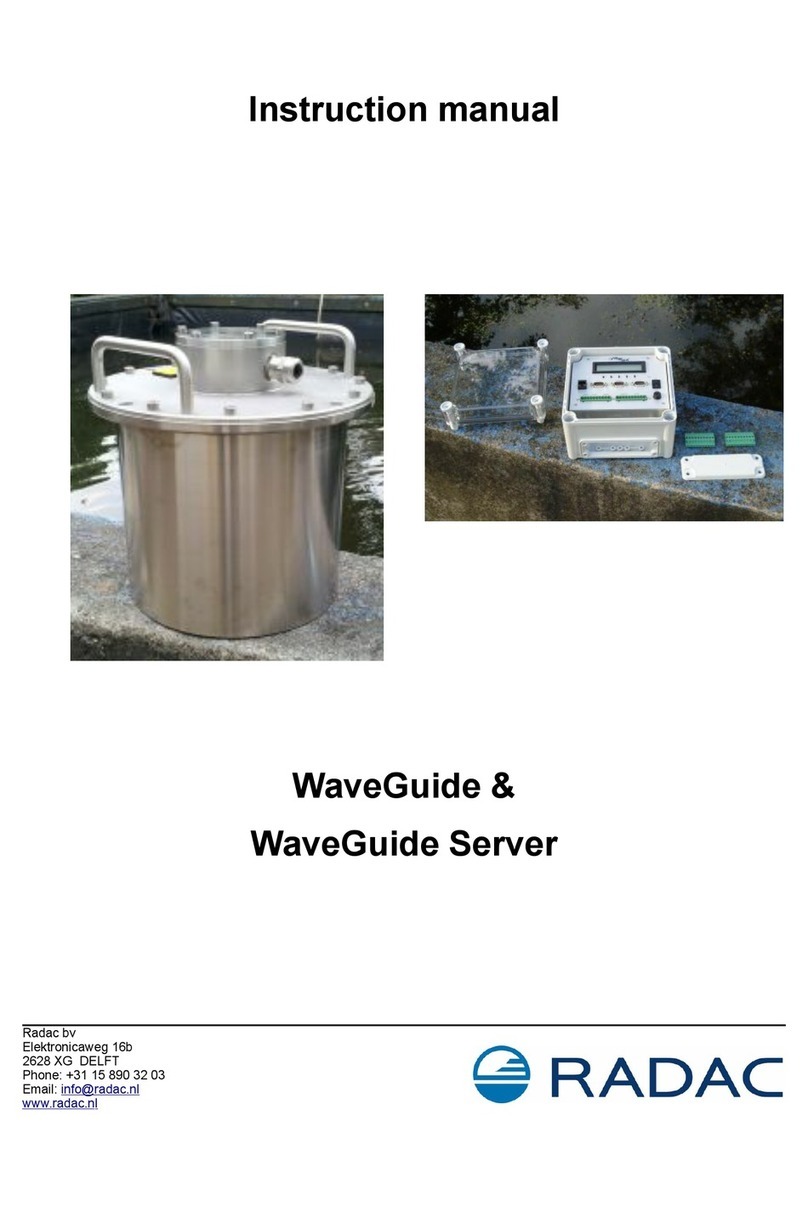
RADAC
RADAC WaveGuide instruction manual
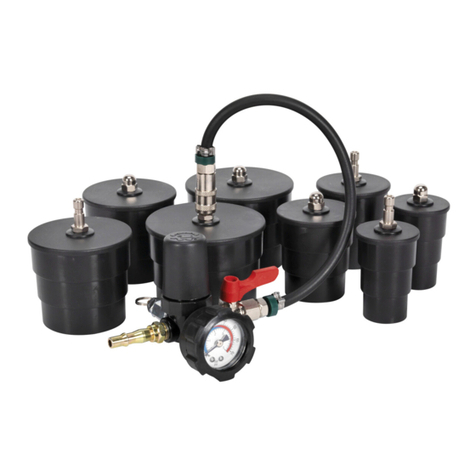
Sealey
Sealey VS2030.V2 quick start guide
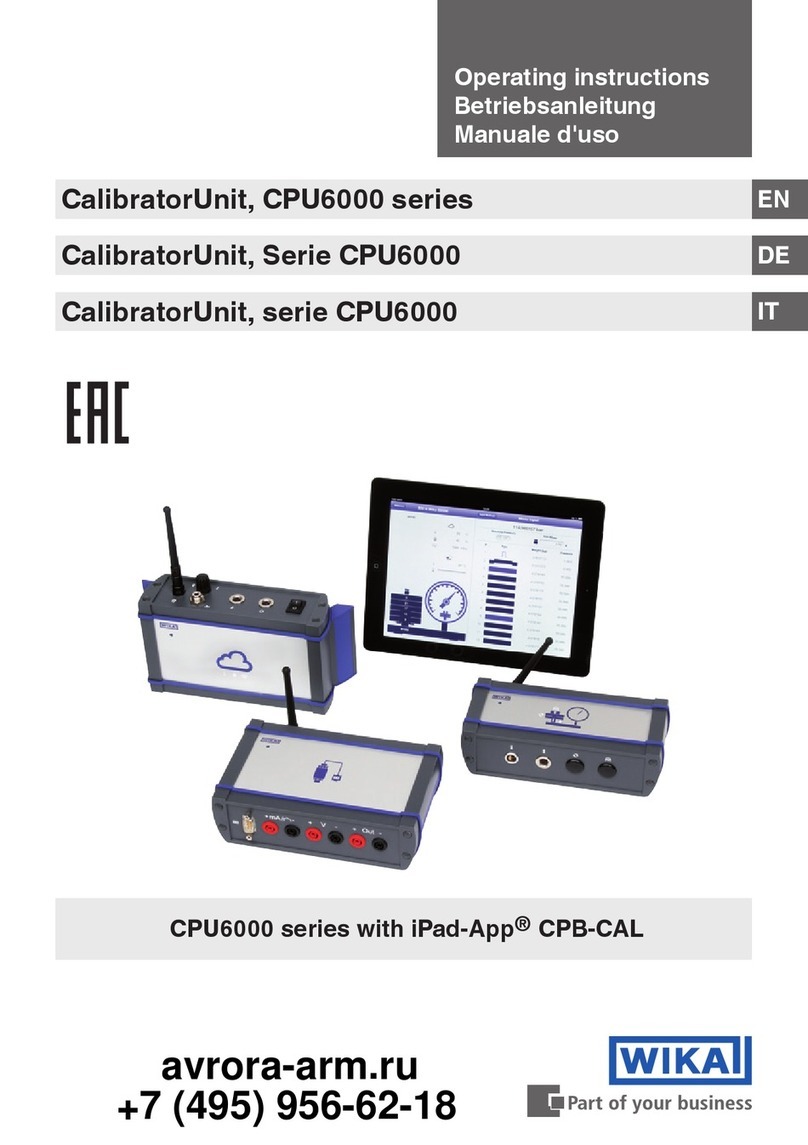
WIKA
WIKA CalibratorUnit CPU6000 Series operating instructions

HoldPeak
HoldPeak HP-6688BR user manual
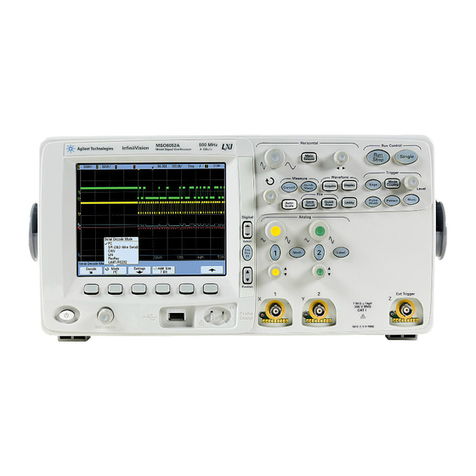
Agilent Technologies
Agilent Technologies InfiniiVision MSO6012A user guide
